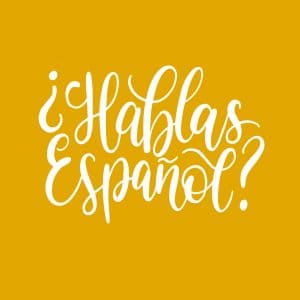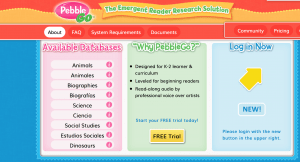 Some free online resources for Spanish teachers
Some free online resources for Spanish teachers
Teachers’ blogs:
Miscositas www.miscositas.com Lori Langer de Ramirez offers a plethora of resources for Spanish teachers: Thematic curriculum units with cultural connections, lesson plans, & handouts, Teaching materials: printable workbooks and clipart collections, Web-based virtual picturebooks with illustrations & vocabulary, Instructional & cultural videos subtitled in simple Spanish with key words,
Realia: tickets, currency and brochures and links
Spanish Playground – http://spanishplayground.net/ Spanish Playground is a source of supplemental material, activities, songs, and games. You will find recommendations for music and books. There are also links to authentic language activities which are appropriate for, or can be adapted to, Spanish language learners. The materials on Spanish Playground include: Picture book suggestions,Games, Songs, Online games and activities, Learn Spanish with Pictures.
Perpetual Beta – http://perpetualbet.blogspot.cz/ This blog addresses a wide range of topics related to EdTech. It focuses on how technology can make teaching and learning more efficient and attractive. Each week, you will find updates about useful links for Spanish and many other ideas for intermediate and advanced Spanish students. For example, a list of online activities for practicing vocabulary: https://www.diigo.com/user/cronopias/vocabulario
Audio and podcasts (free on-line radio shows)
Notes in Spanish – http://www.notesinspanish.com/ Notes in Spanish is designed to help you learn the real Spanish you’ll never find in a textbook or classroom. The accompanying worksheets are designed to back up and help you to remember what you learn in the audio. Download is possible.
Spanish Obsessed – http://spanishobsessed.com/audio/ Collection of Spanish audio lessons and podcasts, for all levels. Many of the podcasts also come with notes and transcriptions. Download is possible.
Audiria – http://audiria.com/ Audiria is an online tool which freely supports your learning of Spanish, offering podcasts to increase your knowledge of the language.
Websites for Kids
Youtube Channels:
Spanish Playground – Videos and songs for teaching Spanish to children. Kids learn vocabulary and verbs from beautiful videos. All videos are supported by printable materials and suggestions for using the songs with children learning Spanish.
Vocabuflash – short stories, vocabulary, grammar in videos.
Other Websites
1 2 3 Teach Me – This is a great site with pronunciation guides (audio), flashcards, videos, songs, lyrics, and more. For vocabulary in particular, check out these flashcards.
A Green Mouse – French, Spanish and English language resources offer accessible listening practice for children backed-up by subtitles, captivating pictures, and ‘stories’ to enthuse children and relate language learning to everyday life.
SpanishDict – Here you can find interactive flashcards to teach kids the Spanish words for colors, clothing, numbers, and more!
Digital Dialects – This site is full of fun, easy-to-play games that teach Spanish grammar, vocabulary, and conversation skills. The Spanish games cover a wide range of topics, including greetings, colors, numbers, foods, units of time, animals, and clothing.
ButterflySpanish – native Spanish speaker will learn you vocabulary, useful phrases, pronunciation, grammar.
GeoCom for Kids – This is a fun-filled site featuring games, animations, coloring books, and printables for learning Spanish.
Salsa – This is a children’s TV show that is free to watch online. It’s all in Spanish, but it includes a translation of each episode. There are also a few games and activities for kids to play.
BBC’s Mi Vida Loca – Mi Vida Loca is another free Spanish TV show, but it’s meant for older kids. The series includes lessons and learning activities, as well as a teacher’s guide and syllabus to follow.
Rockalingua – This subscription-based site also offers a lot of free content, including songs, videos, games, and picture dictionaries.
Online Free Spanish – This site is full of resources in Spanish from level one up to advanced. It includes songs, vocabulary, and grammar lessons.
Spanish Town – This site has several different activities to learn Spanish, including crosswords, word finders, tests, and lessons in vocabulary and grammar.
Spanish Playground This site includes vocabulary lessons, songs, printables, crafts, activities, books, and more.
BookBox – Bookbox offers online books available in different languages. Your kids can build reading and listening skills while they listen to stories with Spanish subtitles.
Calico Spanish – Calico Spanish is a wonderful resource for elementary Spanish curriculum. In addition to their classroom and homeschool materials, they offer free online Spanish videos via YouTube.
PBS Kids Noah is the protagonist of the PBS Kids digital series Oh Noah! The series is designed to introduce children ages four through seven to Spanish in an entertaining way.
Story Place Toggle over to the Spanish version of the site for books and activities in Spanish.
Spanish Simply – This blog, written by an elementary Spanish teacher, has some great ideas for activities that work for in-home practice as well!
BBC – This BBC site features vocabulary lessons, games, videos, photos, and songs.
Hello World Spanish This website has more than 700 free Spanish games and activities, including logic puzzles, matching games, and bingo.
Fluent in Spanish?
The following websites offer games and activities for kids — but they’re all in Spanish, so you’ll need to know how to speak it yourself!
9 Letras – This is a blog by Alberto Abarca Fillat of Huesca, Spain. Alberto shares his free elementary Spanish resources, along with several printable activities for young Spanish learners.
Pakapaka – This site features activities, games, videos, stories, printables, and tongue-twisters!
Make Beliefs Comics Have some ideas for what you want to teach your kids? Use these blank comic templates to create your own lessons!
Educapeques – This site offers exercises categorized by grades and subjects.
Proble+ Math – Word problems are excellent reading comprehension practice! Proble+ (pronounced proble-mas) offers engaging online games that combine Spanish reading comprehension and basic math skills.
Chile Crece Contigo Created by the Chilean government, this site offers online games for preschoolers. The games are an excellent introduction to preschool vocabulary and concepts for Spanish language-learners.
Manualidades con Niños This is the Spanish companion site to SimpleKidsCrafts, featuring hundreds of short tutorials for simple crafts with Spanish audio. Try having your kids watch a video and translate the Spanish, then use the language you heard while completing the craft.
Discovery Familia The Spanish version of Discovery Family offers videos, games, and printable activities in Spanish.
Chillola Learning Spanish is easy here with lots of games (with audio) and free printable resources for parents.
Disney Check out the Spanish version of Disney’s official website to play a variety of games and watch video clips!
El Abuelo Educa This is a great site to learn Spanish, with lessons and games categorized by topics (math, geography, etc.).
Enchanted Learning This site features fun activities, printables, and a vocabulary builder.
Cuentos Interactivos This site has interactive stories for intermediate and advanced Spanish speakers.
Spanish Worksheets for Kids
Gus on the Go This site offers several free Spanish printables and worksheets, including numbers flashcards and an animal vocabulary fortune teller. They also offer a great app for $3.99 (available for both iOS and Android), in which kids interact with Gus, an adorable owl character, for games and vocab lessons.
Spanish4Teachers Although this site is geared toward Spanish teachers, many of these worksheets offered are simple enough for parents to understand and use with kids.
GeoCom for Kids Printables View and print vocabulary activities organized by themes like animals and seasons.
Rockalingua Worksheets These worksheets also teach Spanish vocabulary, including words for seasons, colors, numbers, and weather.
OnlineFreeSpanish Coloring Pages Download and print these coloring pages to learn numbers, animals, and more.
SpanishTown Vocabulary Sheets Practice vocabulary with these printable activities and worksheets.
Enchanted Learning Printables Here you can find short, printable books to practice vocabulary and Spanish reading comprehension.
Living Montessori Now Check out Deb’s list of free Spanish printables and Montessori-inspired activities for some great ideas!
Spanish411 Printable Resources This site offers maps, charts, activity sheets, handouts, games, and posters.
Memorizing the Moments Spanish Resources Here you’ll find flashcards and lessons created by Kaysha, who blogs about early education.
Nick Jr Dora Flashcards Learn simple Spanish greetings with these flashcards featuring Dora and all her friends.
Boca Beth Free Bilingual Resources Boca Beth offers free language card downloads, as well as coloring and activity pages.


 Study suggests talking with children from an early age could promote language skills regardless of socioeconomic status
Study suggests talking with children from an early age could promote language skills regardless of socioeconomic status
 A slew of educational advocacy organizations, including TESOL, the Center for Applied Linguistics, American Federation of Teachers, Association of Latino Administrators and Superintendents, Joint National Committee for Languages, National Association for Bilingual Education, Hispanic Association of Colleges and Universities, California Association for Bilingual Education, Californians Together, and the American Association of Teachers of German, are questioning the legality of the U.S. Department of Education’s proposal to reorganize its Office of English Language Acquisition (OELA) and perhaps fold its operations into another office.
A slew of educational advocacy organizations, including TESOL, the Center for Applied Linguistics, American Federation of Teachers, Association of Latino Administrators and Superintendents, Joint National Committee for Languages, National Association for Bilingual Education, Hispanic Association of Colleges and Universities, California Association for Bilingual Education, Californians Together, and the American Association of Teachers of German, are questioning the legality of the U.S. Department of Education’s proposal to reorganize its Office of English Language Acquisition (OELA) and perhaps fold its operations into another office. Defined Learning has launched its latest extension to Defined STEM, the new Portfolio Assessment Manager, which is designed to help teachers grade project-based assignments and create student portfolios to measure growth over time.
Defined Learning has launched its latest extension to Defined STEM, the new Portfolio Assessment Manager, which is designed to help teachers grade project-based assignments and create student portfolios to measure growth over time. Libros In Español is a new online bookstore for Spanish-Language titles in the U.S. to connect authors and readers. Its mission is to bring improved access to the best books in Spanish for readers across the U.S. The company was started by Filipe Silva, who formerly directed Spanish-Language Sales for Penguin Random House. Librosinespanol.com is a selling platform where readers can now purchase curated best-selling selections (from authors such as Isabel Allende, Paulo Coelho, Mario Vargas LLosa, Gabriel Garcia Marquez, Arturo Perez-Reverte, Julia Navarro and E.L. James) of Spanish-language books in one place, and offers a backlist selection, with more content being added every day.
Libros In Español is a new online bookstore for Spanish-Language titles in the U.S. to connect authors and readers. Its mission is to bring improved access to the best books in Spanish for readers across the U.S. The company was started by Filipe Silva, who formerly directed Spanish-Language Sales for Penguin Random House. Librosinespanol.com is a selling platform where readers can now purchase curated best-selling selections (from authors such as Isabel Allende, Paulo Coelho, Mario Vargas LLosa, Gabriel Garcia Marquez, Arturo Perez-Reverte, Julia Navarro and E.L. James) of Spanish-language books in one place, and offers a backlist selection, with more content being added every day. Vocabulary Systems, Inc. has launched Vocab Victor, a word learning app to help English language learners improve their vocabulary by playing games on their smartphones or tablets. Targeted at adult learners, such as college students, it builds on the students’ existing vocabulary, teaching new words as it strengthens knowledge of existing words. The games are designed to promote native-like word knowledge.
Vocabulary Systems, Inc. has launched Vocab Victor, a word learning app to help English language learners improve their vocabulary by playing games on their smartphones or tablets. Targeted at adult learners, such as college students, it builds on the students’ existing vocabulary, teaching new words as it strengthens knowledge of existing words. The games are designed to promote native-like word knowledge. In Future-Focused Learning: Ten Essential Shifts of Everyday Practice, published by Solution Tree, author Lee Watanabe-Crockett details how educators can shift instruction to focus on student-centered learning competencies to support critical thinking and digital skills.
In Future-Focused Learning: Ten Essential Shifts of Everyday Practice, published by Solution Tree, author Lee Watanabe-Crockett details how educators can shift instruction to focus on student-centered learning competencies to support critical thinking and digital skills. Learning, remembering, and using the stress and intonation patterns of North American English can be complicated and cumbersome. The interference of using one’s native-language rhythm patterns can create the potential for misunderstanding, frustration, and miscommunication. RULES on the Run offers a practical solution to the classroom teacher. By learning the stress, intonation, and pronunciation rules that guide American English, speakers can adopt more listener-friendly communication, achieve personal satisfaction, and succeed academically and professionally.
Learning, remembering, and using the stress and intonation patterns of North American English can be complicated and cumbersome. The interference of using one’s native-language rhythm patterns can create the potential for misunderstanding, frustration, and miscommunication. RULES on the Run offers a practical solution to the classroom teacher. By learning the stress, intonation, and pronunciation rules that guide American English, speakers can adopt more listener-friendly communication, achieve personal satisfaction, and succeed academically and professionally. Capstone’s K–2 online resource PebbleGo has added new Spanish materials. The latest offering, contextually translated to maintain proper academic vocabulary and supported by natural voice audio, will begin to roll out later this fall. PebbleGo’s database is used by students in nearly 20% of the country’s elementary schools. With more than 1,000 articles connected to K–2 curriculum topics, PebbleGo exposes students to the concept of research and credible sources to begin developing good digital citizenship skills at an early age. Each article is supported by natural voice audio, recorded by professional voice-over artists, which engages students and improves comprehension.
Capstone’s K–2 online resource PebbleGo has added new Spanish materials. The latest offering, contextually translated to maintain proper academic vocabulary and supported by natural voice audio, will begin to roll out later this fall. PebbleGo’s database is used by students in nearly 20% of the country’s elementary schools. With more than 1,000 articles connected to K–2 curriculum topics, PebbleGo exposes students to the concept of research and credible sources to begin developing good digital citizenship skills at an early age. Each article is supported by natural voice audio, recorded by professional voice-over artists, which engages students and improves comprehension.